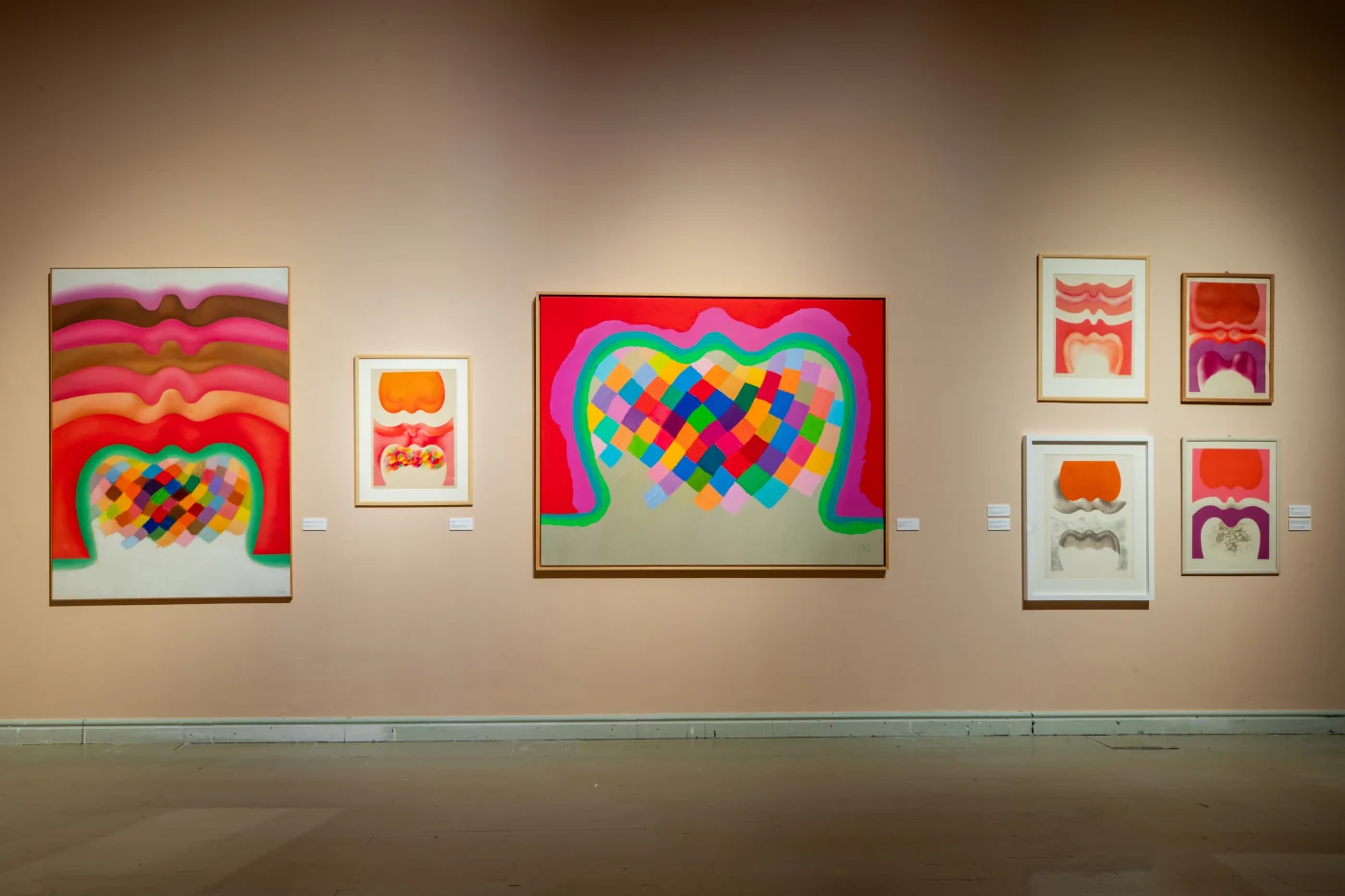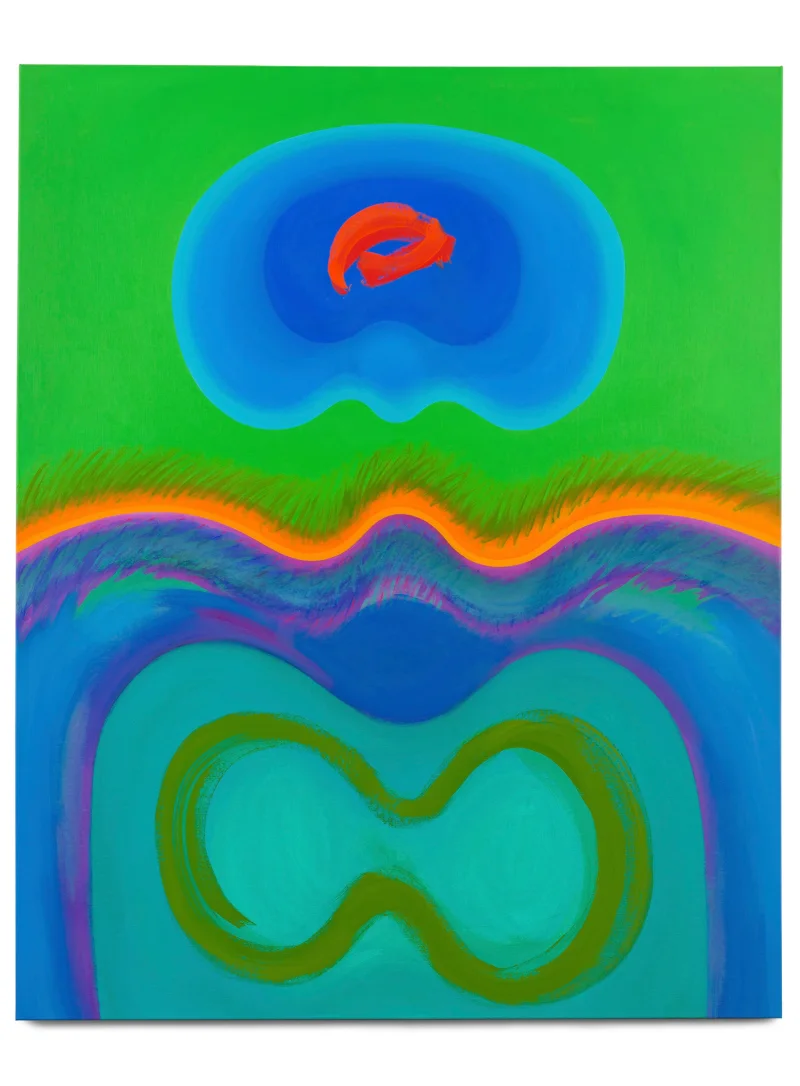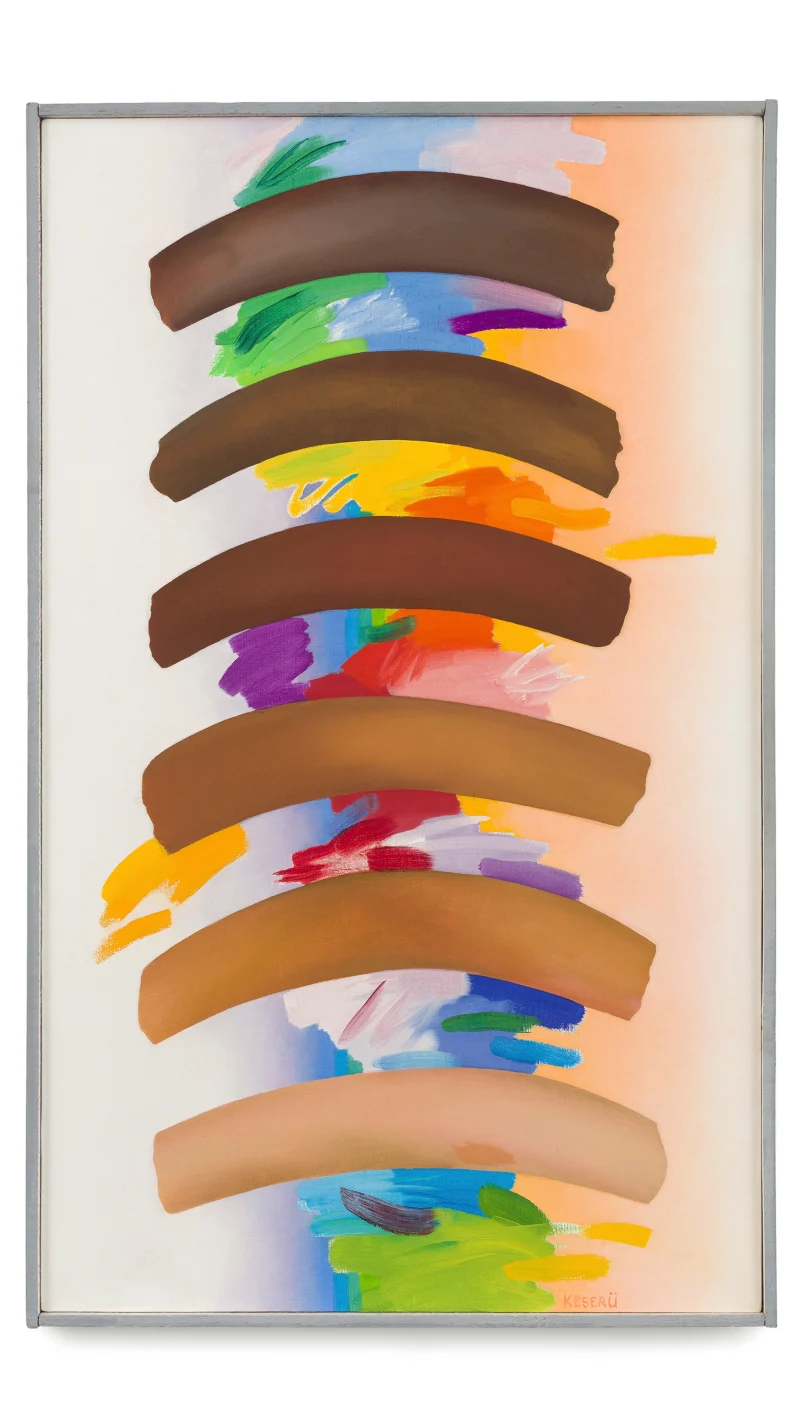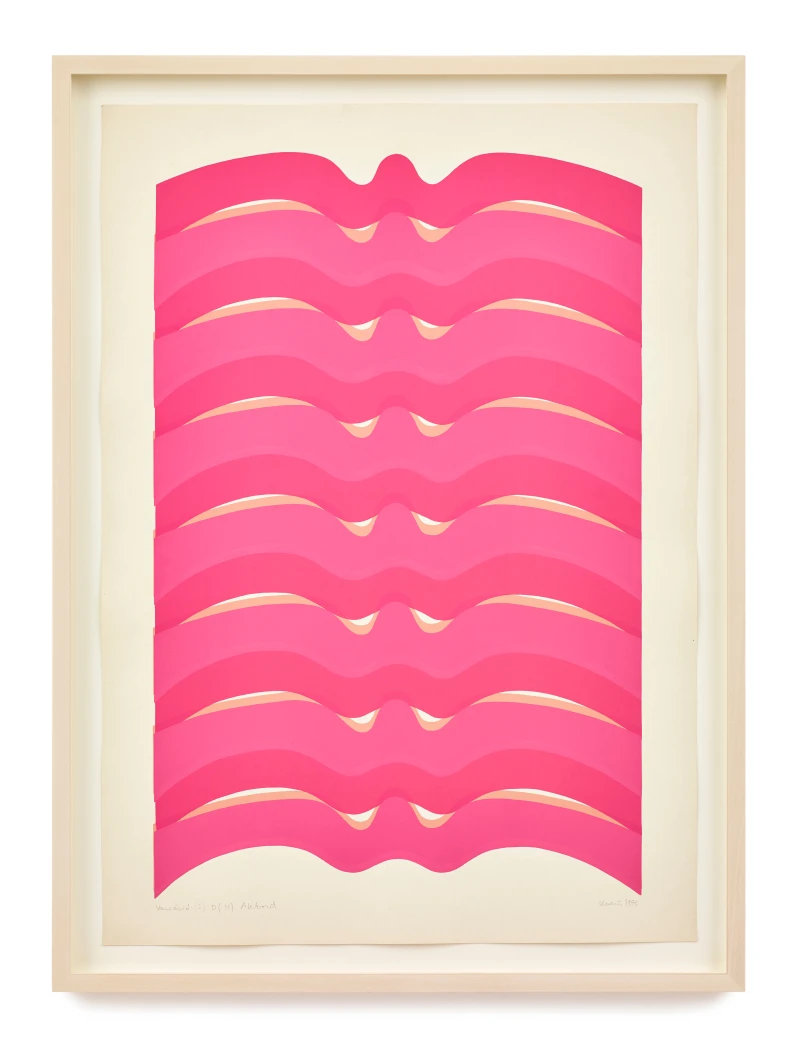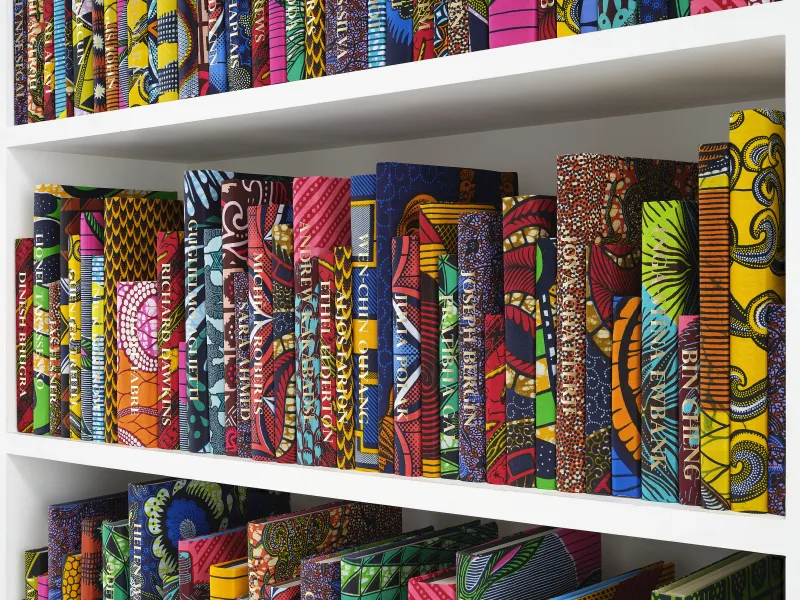
Ilona Keserü
Overview
With a career spanning over seventy years, Keserü is one of Hungary's leading post-war abstract artists.
With a career spanning over seventy years, Keserü is one of Hungary's leading post-war abstract artists.
In the face of political and cultural adversity, Keserü’s organic style of abstraction developed in defiance of Soviet rule following the Hungarian Revolution of 1956. The artist’s distinctive approach combines modern abstraction with references to Hungarian folk culture and historic European imagery. Her use of colour, materials and soft forms draw comparison with artists such as Eva Hesse, Louise Bourgeois and Judy Chicago.
Anya Harrison, writer and curator, states: “For Keserü, the sensation of looking is always a haptic, bodily experience. Undulating lines – painted and appliquéd to surfaces or discernible in the shaped canvases themselves – are a reoccurring staple, redolent of the ebb and flow of waves or the wavelengths of light that determine and structure rules of perception. In fact, they’re a readymade form, taken from the idiosyncratic heart-shaped tombstones found in the cemetery of the small village of Balatonudvari which Keserü encountered in 1967; they have taken root in her practice ever since.” The erotic, corporeal associations connected with these forms are emphasised through her choice of colour, using fleshy pinks, lipstick reds and burnt oranges.
Keserü’s strong engagement with colour remains at the core of her practice today, exploring the optical effects of combining specific pigments with one another. Her characteristic use of curved shapes is now accompanied by gestural, erratic brushstrokes and abstract swathes of paint. The third volume of her catalogue raisonné will be published in 2024, bringing together works made since 2001.



Exhibitions
Latest

